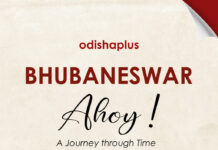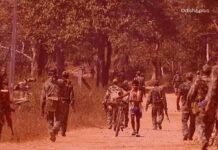Dr. Anita Sabat
In a three- part article, Anita Sabat traces the history of Odisha’s Rasagola and how it became a brand.

We felt that the #RasagolaDibasa initiative on social media will spread awareness that the Rasagola originated in Odisha and celebrating it on Niladri Bije will inform everyone about this centuries-old ritual of Lord Jagannath. We were united for the Rasagola Dibasa campaign as we saw this as an opportunity to settle the Rasagola origin debate once and for all.
Rasagola Dibasa
On March 18, 2015, we proposed the celebration of #RasagolaDibasa
We decided the date July 30, 2015, the Niladri Bije of the Nabakalebara Ratha Jatra, for the celebration of the maiden #RasagolaDibasa on social media. Through a series of tweets and blog posts, public support was garnered. Many others on social media shared our views and supported this movement. Rasagola Dibasa was totally an initiative of our enthusiastic Odia group on Twitter.
Through public participation, we shared information about Rasagola online. #RasagolaDibasa hashtag trended on Twitter on July 30, 2015. Odia newspaper, Sambad, and FM Radio Choklate, and confectioners of Pahala celebrated a Rasagola exhibition-cum-awareness event in Bhubaneswar and in Pahala. Eminent sand artist, Sudarsan Pattnaik, heeded to our request to make a sand sculpture on Puri Beach depicting Niladri Bije.
The maiden Rasagola Dibasa celebration, true to its intention, sparked nationwide debate and participation. Starting in 2015, #RasagolaDibasa is being celebrated every year on the tithi of Niladri Bije in the lunar calendar. The date varies every year as per the lunar calendar. The second Rasagola Dibasa was celebrated on the 17th of July 2016, the third was celebrated on July 6th, 2017, and the fourth Rasagola Dibasa celebration was on July 25th, 2018. Rasagola Dibasa is on July 15 this year (2019).
Many articles were written and published in newspapers, magazines, and online portals, videos were shared, and TV-debates were conducted about Rasagola. Many unknown facts came to light. In September 2015, the Odisha Govt. decided to set up expert committees to research and collect evidence. In July 2016, Dr. Asit Mohanty submitted a report over a hundred pages with supporting documents that Rasagola originated in Odisha.

Rasagola Research
Research shows that Rasagolas have existed in Odisha for centuries- even before the birth of Calcutta city. Else, the word Rasagola would not have been present in 15th Century Odia text when it is claimed to be “invented in Calcutta, Bengal in 1868”.

Dandi Ramayana
Balaram Das’s Ramayana is known as Dandi Ramayana. It is also known as Jagamohana Ramayana as Balaram Das composed and sang it at the Jagamohana of the Puri Jagannath Temple. Its ‘Ayodhya Kanda’ has a list of many Odia food preparations- chhena and chhena-based products including the Rasagola. As per the description, after Rama left for the forest, Bharata and Shatrughana went to bring him back. On their way, they accepted the hospitality of sage Bharadwaj, who served them many dishes including dudhachhena (cottage-cheese prepared from milk) and chhena items like chhenapuri, chhenaladu, Rasagola, and rasabali among others.

Utkala Deepika – 1892
Shri Fakir Mohan Senapati, the father of modern Odia Literature, published a book titled Utkala Bhramanam (Utkala Travelogue- Utkala refers to Odisha & Bhramana means tour) in 1892. The book review was published in ‘Utkala Deepika’ dated August 27, 1892. Referring to Utkala Bhramana as an “excellent Odia book”, Fakir Mohan has written that it has “chuda (flattened rice) & Rasagola” too.

Bali Jatra – 1893
A poem Bali Jatra was published in the weekly Indradhanu in 1893. In his description of Cuttack’s famous fair, the writer of the poem, Damodar Pattanayak has described Rasagola along with other attractions found in the fair. In the mentioned Gudia shop of the 1893 Bali Jatra, confectionery like ladu, Rasagola, barfi, jilapi, tejapatra podapistaka, kanchagola, sarapuli, malapua, mohanabhoga, lalmohana, etc. was available.
It is evident that Rasagola was available and popular in 1893 in Bali Jatra, the famous fair of Odisha. Bali Jatra is being celebrated annually from many centuries in Cuttack, Odisha, and even today there are stalls selling Rasagolas there.

Rasagola Tradition
Rasagola has been traditionally offered as bhoga to Goddess Lakshmi (Sridevi) at Shree Jagannath Temple at Puri on Niladri Bije, the last day of the Ratha Jatra. Goddess Lakshmi gets upset because her husband, Shree Jagannath goes on Ratha Jatra, a nine-day long sojourn to His birthplace at Gundicha Temple with His siblings and without taking her along. After the Ratha Jatra, when it is time for the deities to re-enter the Temple on Niladri Bije, She allows Lord Balabhadra and Devi Subhadra to enter. However, She locks Jai Vijay Dwar, one of the temple gates, and prevents Lord Jagannath and His convoy from re-entering the sanctum sanctorum of the Temple.
There is a ritualistic conversation known as ‘Bachanika’ between the divine couple. Then, Lord Jagannath offers Rasagola.This is called ‘Manabhanjana’ (the appeasement of Goddess Lakshmi by the offering of Rasagola). Each year, this forms part of the Niladri Bije. Niladri Bije marks the return of the deities to the temple after the Ratha Jatra festival. Niladri refers to Shree Jagannath Temple and Niladri Bije means ‘arrival of the God’. Niladri Bije is the only day of the year when devotees offer Rasagolas as bhoga to Lord Jagannath. This is a continuing tradition for several centuries. This observance marks the end of the Ratha Jatra festival.

Rasagola is also clearly mentioned in the list of bhogas of Shree Jagannath Temple, Puri. ‘Bhitarachha Seba’ is mentioned in Serial No.4 of the list of ‘Sebaks, Pujaris and other persons employed for or connected with Seba-Puja’ of the Shree Jagannath Temple. As per the rituals of Niladri Bije, the Rasagola bhoga is traditionally offered to Goddess Lakshmi on behalf of Shree Jagannath. As per the Record of Rights, this is the duty of Bhitarachha Sebaka. It is mentioned in the Page-15 of the Bhitarachha Sebara Niyama.
The English translation of the selected text is as follows:
“As Jagannath proceeds to His singhasana from the Ratha, he (Bhitarachha) unties the marriage-knot of Rukmini (and Jagannath). He offers dahipati (curd & khoa), ghasa (scented-water), bidiya (paan), manohi (food-offering) and bhoga.”
Traditionally and, as per Record of Rights, Tadhau Karan Sebaka is the record-keeper of Shree Jagannath Temple. Tadhau Karan Sebaka has furnished an ancient record related to the palm-leaf manuscript, the text of which is copied to the ancient diary.
Special-Cover
A palanquin-carried special-cover for Rasagola – ‘Rasagola in SriJagannathji’s Cuisine’, sharing info about Niladri Bije, was released by the Department of Posts on Dola Purnima in March 2018. (To Continue)
(Dr. Anita Sabat is a Bhubaneswar based social entrepreneur & Activist. This article was earlier published in Rath Yatra issue of ‘Odisha Review’)





























